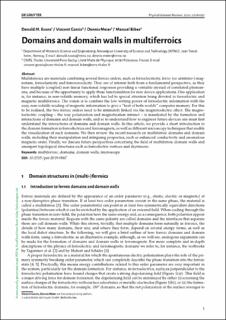| dc.description.abstract | Multiferroics are materials combining several ferroic orders, such as ferroelectricity, ferro- (or antiferro-) magnetism, ferroelasticity and ferrotoroidicity. They are of interest both from a fundamental perspective, as they have multiple (coupled) non-linear functional responses providing a veritable myriad of correlated phenomena, and because of the opportunity to apply these functionalities for new device applications. One application is, for instance, in non-volatile memory, which has led to special attention being devoted to ferroelectric and magnetic multiferroics. The vision is to combine the low writing power of ferroelectric information with the easy, non-volatile reading of magnetic information to give a “best of both worlds” computer memory. For this to be realised, the two ferroic orders need to be intimately linked via the magnetoelectric effect. The magnetoelectric coupling – the way polarization and magnetization interact – is manifested by the formation and interactions of domains and domain walls, and so to understand how to engineer future devices one must first understand the interactions of domains and domain walls. In this article, we provide a short introduction to the domain formation in ferroelectrics and ferromagnets, as well as different microscopy techniques that enable the visualization of such domains. We then review the recent research on multiferroic domains and domain walls, including their manipulation and intriguing properties, such as enhanced conductivity and anomalous magnetic order. Finally, we discuss future perspectives concerning the field of multiferroic domain walls and emergent topological structures such as ferroelectric vortices and skyrmions. | en_US |

